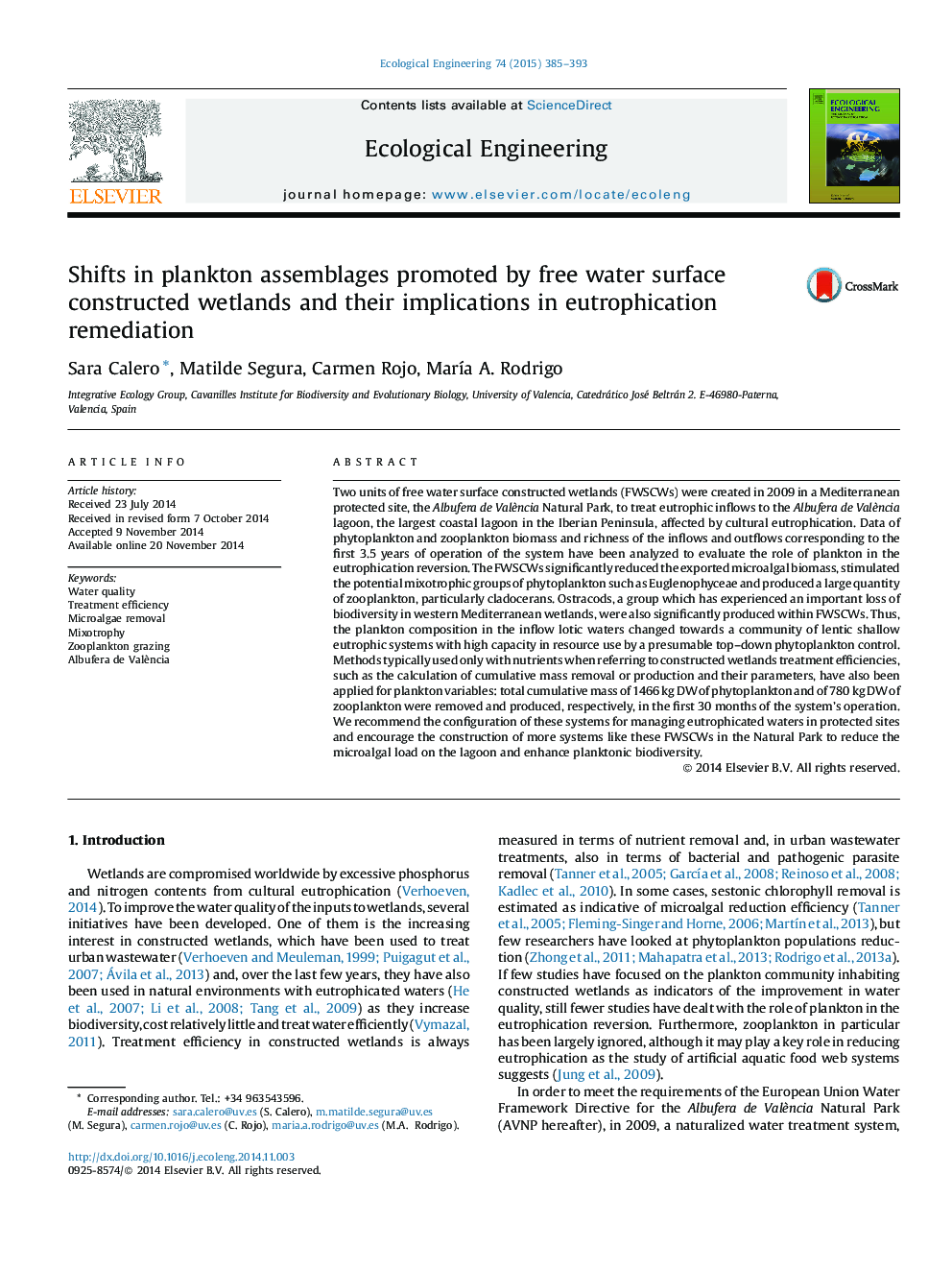| Article ID | Journal | Published Year | Pages | File Type |
|---|---|---|---|---|
| 4389331 | Ecological Engineering | 2015 | 9 Pages |
Abstract
Two units of free water surface constructed wetlands (FWSCWs) were created in 2009 in a Mediterranean protected site, the Albufera de València Natural Park, to treat eutrophic inflows to the Albufera de València lagoon, the largest coastal lagoon in the Iberian Peninsula, affected by cultural eutrophication. Data of phytoplankton and zooplankton biomass and richness of the inflows and outflows corresponding to the first 3.5 years of operation of the system have been analyzed to evaluate the role of plankton in the eutrophication reversion. The FWSCWs significantly reduced the exported microalgal biomass, stimulated the potential mixotrophic groups of phytoplankton such as Euglenophyceae and produced a large quantity of zooplankton, particularly cladocerans. Ostracods, a group which has experienced an important loss of biodiversity in western Mediterranean wetlands, were also significantly produced within FWSCWs. Thus, the plankton composition in the inflow lotic waters changed towards a community of lentic shallow eutrophic systems with high capacity in resource use by a presumable top-down phytoplankton control. Methods typically used only with nutrients when referring to constructed wetlands treatment efficiencies, such as the calculation of cumulative mass removal or production and their parameters, have also been applied for plankton variables: total cumulative mass of 1466 kg DW of phytoplankton and of 780 kg DW of zooplankton were removed and produced, respectively, in the first 30 months of the system's operation. We recommend the configuration of these systems for managing eutrophicated waters in protected sites and encourage the construction of more systems like these FWSCWs in the Natural Park to reduce the microalgal load on the lagoon and enhance planktonic biodiversity.
Related Topics
Life Sciences
Agricultural and Biological Sciences
Ecology, Evolution, Behavior and Systematics
Authors
Sara Calero, Matilde Segura, Carmen Rojo, MarÃa A. Rodrigo,
